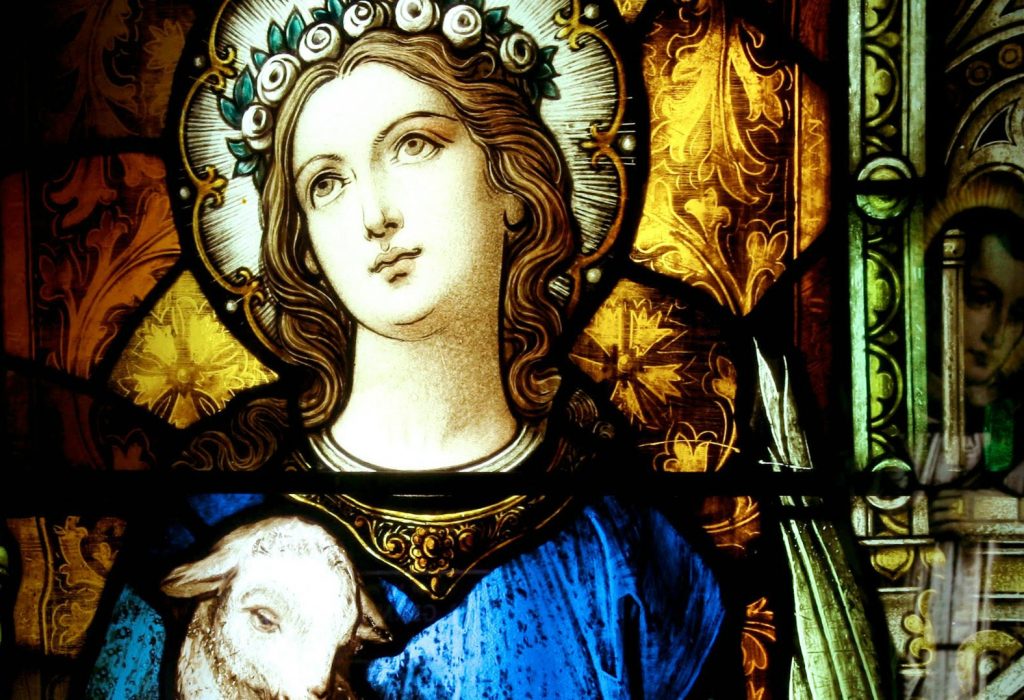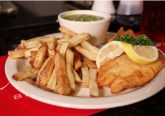Body and Soul: Patron saints of food and drink

By Erin Schurenberg
Perhaps the most famous meal in history is The Last Supper. This event occurred in an upper room, not a kitchen. When Jesus cooked, He grilled fish or bread by the beach. Of course, another time, He multiplied those two items of food to feed the masses.
These days, however, if you’re not eating take-out or dining in a restaurant, (where, incidentally, St. Martha would be the patron saint of your server,) you are likely to be preparing your food in a kitchen. If you doubt your prowess to prepare the “eats” skillfully, or question the talents of your designated chef, then St. Benedict is your go-to saint. St. Benedict is indirectly associated with Benedictine, the herbal liqueur with alleged stomach-calming properties, but more importantly, he is the saint who keeps folks safe from food poisoning. After spending the better part of his life establishing monastic rules, he agreed to assume the role of abbot for an Italian monastery (possibly Vicovaro.). The monks there hated him so much that they tried to poison his wine. He prayed over the cup and it shattered. He returned to his previous home, a cave in Subiaco, wherein a neighboring priest tried to ruin him with poisoned bread. When Benedict prayed over the bread, a raven swept in and carried it away. (Note to self: always say Grace.)
Our Lady has many titles and a few of these are associated with favor in the kitchen, such as Our Lady of Guadalupe, at least in some restaurant kitchens in Southern California where Latino cooks seek her blessing. Other Hispanic foodies, especially in New Mexico, have at least one item in their kitchen that bears the image of San Pasqual, be it a stamped tin, a painted retablo or an embroidered dish towel. Mostly venerated by people in the New World, although also by some in his native Spain, Pasqual (aka Paschal) was a 16th century lay brother of the Franciscan Friars of the Alcantarine Reform. His duties in the cloister were to prepare meals and keep the kitchen clean. He feared this assignment would keep him from his prayers, but he discovered cooking was meditative, a complement to his spiritual life. One legend says that Pasqual summoned angels to help him with his chores so he could more easily pause to pray. Twenty-first century chef Rocky Durham, a native of Santa Fe and life-long culinarian, developed several lamb recipes inspired by San Pasqual, in part because this saint is also one of the many patron saints of shepherds.
Blessed Margaret Ebner (~1291-1351) often gave up food in abstinence and fasting, following the example of St. Bernard of Clairvaux. For neither was the refrain from eating a simple refusal, but rather an attempt to partake of only what was needed to survive. Wrote Margaret, “Whatever was placed before me, I enjoyed as much as I was able. I was always careful to eat only what I needed so that I would have no gnawing pangs of conscience about breaking off too much bread for myself.” When she did eat though, she tried to thoroughly enjoy her food, and sometimes this relish was expressed by noisy mastication.
Opinions differ as to whether the church has an official patron saint of dieters but Blessed Margaret or St. Bernard might be sympathetic to such an undertaking. In the angelic realm, the name Raphael means, “God heals,” so this archangel might be kindly disposed to a person trying to eat healthy. St. Thomas Aquinas was said to be a large man, so he might have empathy for a dieter. Some sources, though, say that the patron saint of dieters title goes to St. Charles Borromeo. Specifically, he is considered to be the patron saint of obesity and dieting. Still others turn to St. Margaret of Cortona whose rigorous fasting gave her the reputation as the saint invoked to resist temptation.
For many Americans though, the last two months of the year are not the time for beginning diets. Save that for the new year and the old resolutions. Rather the holidays are a time to eat, drink and be merry. And while St. Agnes is the patron saint of gardeners, this fourth century Roman saint has a cookie recipe named after her, “Agnesenplatzchen,” or “St. Agnes Cookies.”
Agnes was martyred at the age of 13 after refusing an offer of marriage due to her commitment to Christianity. How she became affiliated with what are essentially jam filled, shortbread sandwich cookies is open to speculation and no facts. An old German cookbook first published in 1924 includes the recipe for these cookies. This recipe was later reprinted in Ernst Schuegraf’s, “Cooking with the Saints: An Illustrated Treasury of Authentic Recipes Old and Modern.”













